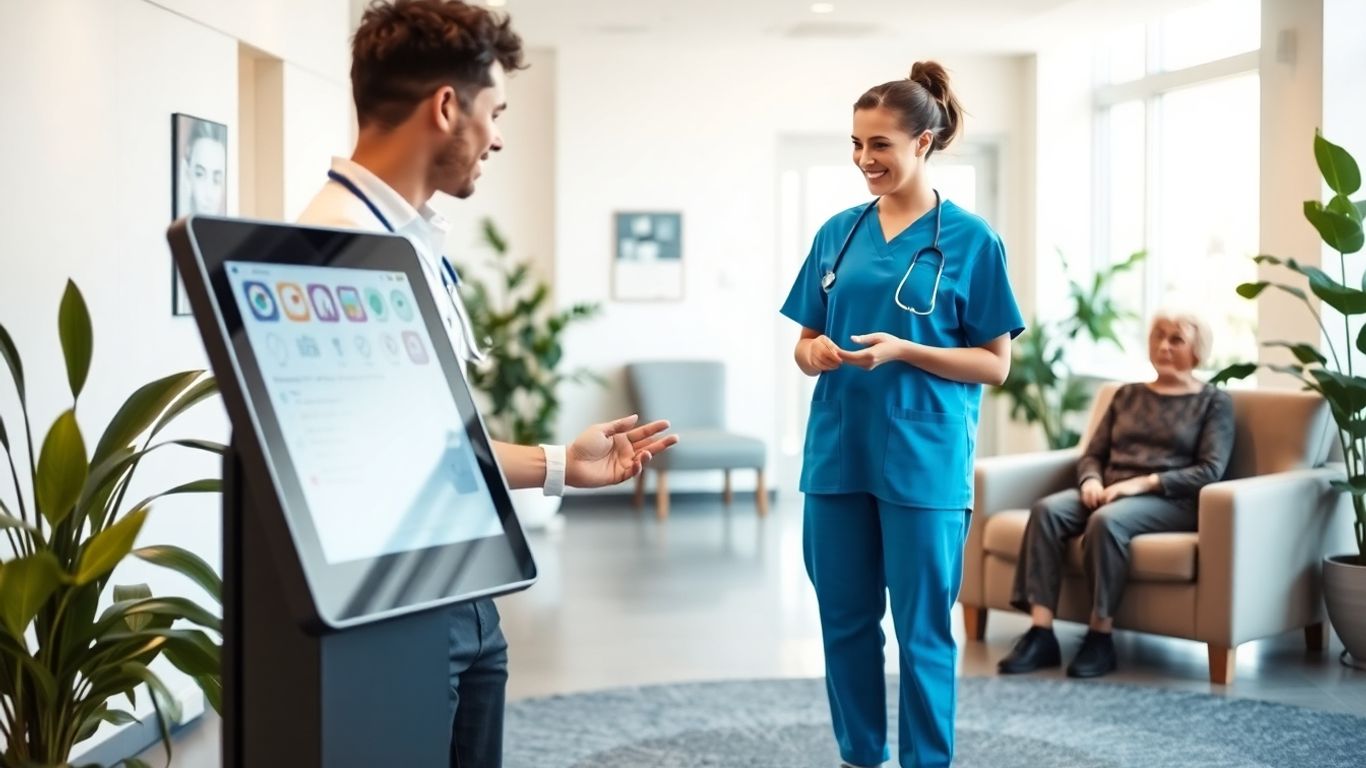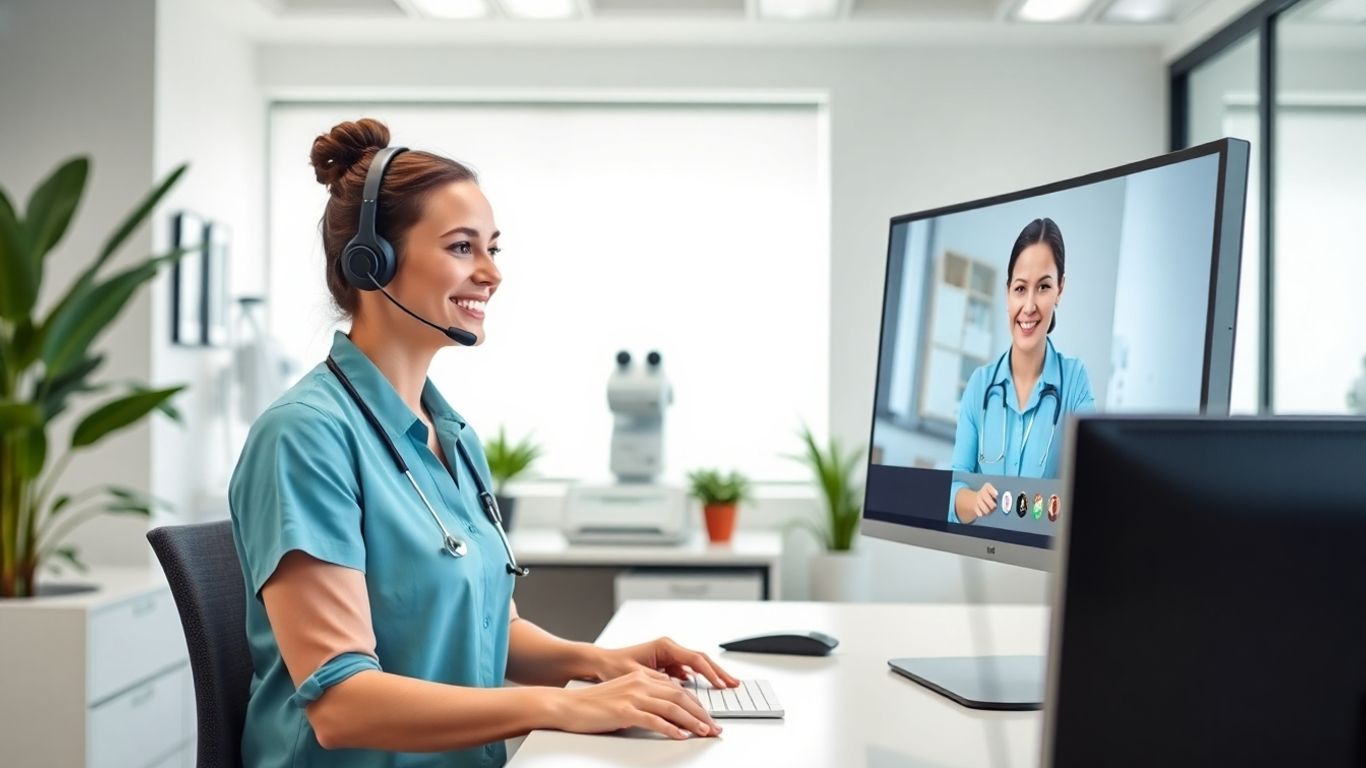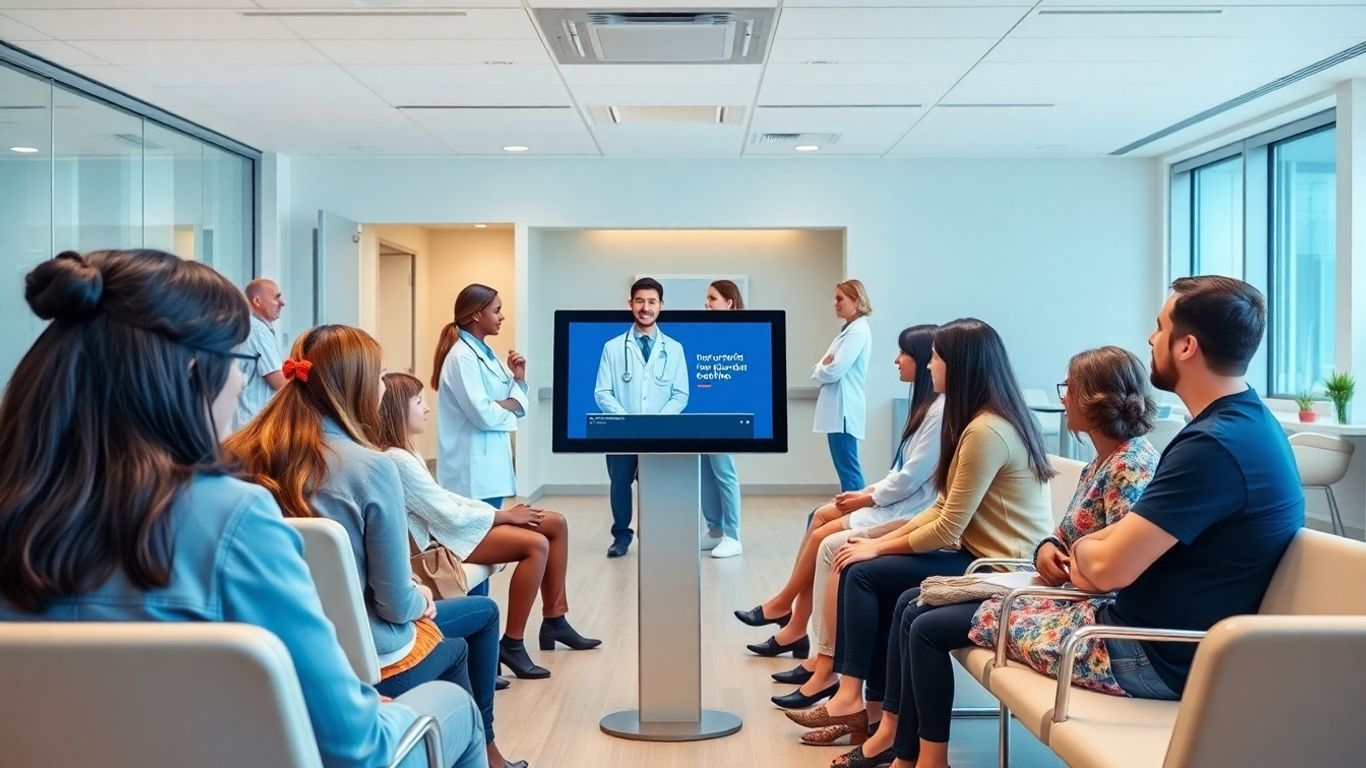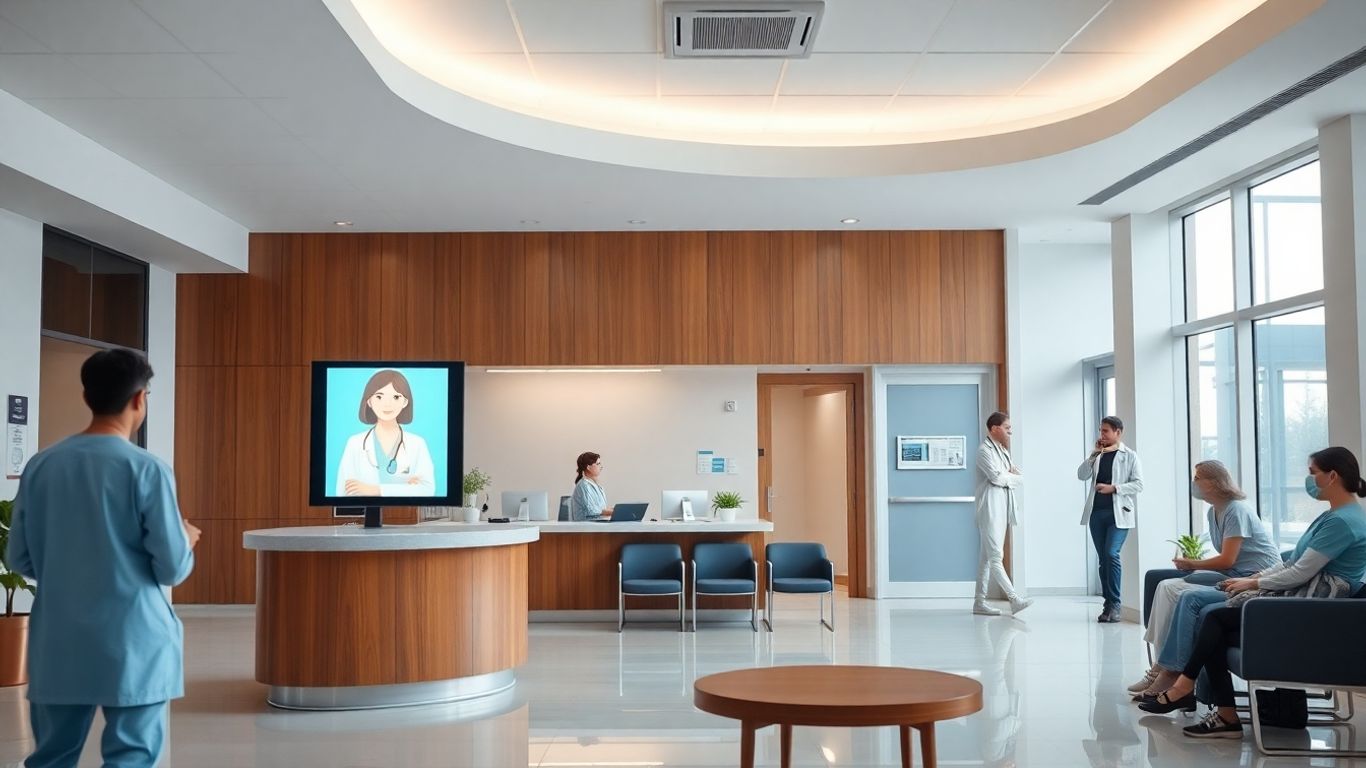Healthcare is changing fast, and in 2025, virtual receptionist healthcare solutions are taking center stage. Clinics and practices are turning to these AI-powered assistants to handle calls, schedule appointments, and answer patient questions around the clock. Patients want quick answers and easy access, and providers need to keep costs down while staying efficient. Virtual receptionists are stepping in to fill these gaps, helping both patients and staff. Whether you run a small clinic or a busy specialty practice, these tools make a real difference in how smoothly things run.

Virtual receptionist solutions are shaking up how patients connect with their healthcare providers in 2025. It's less about automation for the sake of it and more about building real connections and making things smoother for everyone. Let’s walk through how these advances are tuning up engagement in meaningful ways.
One-size-fits-all just doesn't cut it anymore. Virtual receptionists use intelligent scripts and smart data to tailor conversations with each patient. For example:
With systems like My AI Front Desk, healthcare teams can easily set preferences so that every interaction feels personal, not robotic.
The right message at the right time makes all the difference for anxious or busy patients, turning even routine check-ins into moments of real support.
No more waiting days for a callback or worrying when the front desk is swamped. Virtual receptionists now
Here's a quick look at the average patient inquiry response times:
Just being able to get a question answered quickly builds patient confidence and makes things feel more human, not less.
Reaching out after an appointment or procedure used to be hit or miss. Virtual receptionists are changing that by:
For clinics focused on treatment acceptance or long-term results, having a reliable follow-up system drives stronger relationships. Even simple check-ins help patients feel remembered and cared for, directly impacting loyalty and return visits. You don’t need a huge staff for this now—clear communication is handled by smart reception tools, making it routine instead of a burden.
In short: Virtual receptionists are making healthcare feel approachable and responsive. Instead of robotic scripts or endless hold music, patients experience real concern, real answers, and real people behind the scenes—giving every practice a friendlier face in 2025.

Modern healthcare demands that patients can reach out at any hour, not just during a clinic's regular window. Virtual receptionist healthcare solutions finally make round-the-clock support the norm instead of the exception. No more unanswered calls late at night, or frustrated patients left waiting until morning.
Unlike traditional answering services that just take messages, virtual receptionists use AI to offer true support:
With features like unlimited parallel calls, clinics never have to worry about busy signals or lost inquiries—even during sudden surges in demand after hours.
Urgent situations can’t wait. That’s why virtual receptionists are programmed to:
This keeps patients from bouncing between voicemails and makes sure real emergencies get the priority they deserve.
When every minute counts, AI-driven urgent response takes the stress off human staff, letting them focus on care, not logistics.
Patients often have basic questions—about medication, scheduling, or insurance—that can’t wait for business hours. A virtual receptionist provides:
Thanks to advanced AI-enabled 24/7 support, patient frustration from waiting or confusion drops dramatically. With these systems, every patient interaction—no matter the hour—feels just as attentive as a face-to-face conversation at noon.
AI has turned appointment scheduling from a headache into a smooth, predictable process for both patients and providers. Now, patients expect quick, accurate bookings—no matter the time or day. Virtual receptionist platforms tap into AI-powered engines to manage calendars, communicate changes, and prevent lost appointments.
One of the biggest problems in healthcare is missed appointments. In 2025, AI-powered virtual receptionists have mostly solved this. Each patient automatically receives:
By automating these touchpoints, the system takes the pressure off staff and boosts attendance. Some services, like My AI Front Desk, are designed to handle all this autonomously.
Automated reminders have made appointment management almost frictionless for patients. Clinics hardly ever chase no-shows—AI does it for them with a few clicks.
Gone are the days of double-bookings or endless phone tag. Now, AI virtual receptionists plug directly into a practice’s calendar (and often CRMs), offering:
This integration means patients can book—or change—appointments around the clock, and their preferences or special needs are saved for next time. Whether a provider uses Google Calendar or a specialized healthcare platform, today’s leading solutions sync updates instantly so nothing falls through the cracks.
In the past, changing an appointment meant phone queues and callbacks from busy offices. AI-powered receptionists have simplified everything. Patients now get:
The result is flexibility: people can manage their healthcare visits without stress. Solutions like White Label dorxata make this simple by tying into existing scheduling systems, letting even small clinics offer big-clinic flexibility quickly.
Letting patients easily reschedule online keeps appointment books full. There's less wasted time, and staff spend more time with patients—not the phone.
With these AI solutions, healthcare practices fill their schedules with less hassle, staff get more breathing room, and patients feel in control. It’s one less thing to worry about in a busy world.
Running a healthcare practice in 2025 means watching every dollar, especially when staffing costs are looming over your budget. Virtual receptionist solutions are quickly catching on, and not just because they sound high-tech. It's about spending less on routine tasks and scaling your operation without breaking the bank. Let’s break down exactly how these systems bring real savings and flexibility.
Hiring front desk staff isn't as simple as signing a check every two weeks. When you add up recruiting costs, training, turnover, downtime, paid leave, and benefits, expenses balloon quickly. Virtual receptionist platforms sweep aside most of those hidden numbers.
Freeing up budget on the non-clinical side means practices can reinvest in patient care or modernize technology elsewhere, turning cost cuts into competitive advantage.
Not every clinic operates at the same volume. Some are slammed during flu season, others need lighter staffing most of the year. Virtual receptionist offerings are all about matching service with current realities:
A flexible plan means you aren’t locked into a salary or stuck managing a slow front desk on a quiet Tuesday morning; instead, your coverage adjusts automatically.
Remember the headaches of expansion—recruiting, onboarding, getting new team members up to speed? Virtual solutions make expansion a whole lot less stressful.
As your practice grows, virtual receptionist systems grow alongside you, so scaling up is just a click away instead of a six-week HR project.
Healthcare providers looking to save money, keep up with unpredictable demand, and expand smoothly are finding that a virtual front desk isn’t just a cool gadget—it’s a strategic advantage.
Security and privacy in healthcare aren’t just about ticking boxes—they protect every patient’s trust. With virtual receptionist healthcare solutions, clinics and practices are paying closer attention to how data is handled, stored, and communicated in 2025.
Patient health information must stay confidential, and virtual receptionist systems take that seriously. These platforms rely on strict standards to make sure calls, texts, and emails don’t expose sensitive details to the wrong people. They train their AI assistants in medical terms and privacy practices, so every chat, call, or answer follows regulations. It’s not just about keeping data away from hackers; it’s about making sure internal staff and patients feel safe using the service. Take dental clinics, for example—they benefit from round-the-clock help for scheduling appointments without sacrificing privacy, as pointed out in the context of AI-based receptionist scheduling benefits.
It’s one thing to talk privacy—it’s another to store patient records without slip-ups. Virtual receptionists now use encrypted cloud storage and secure servers that control who gets to see what. Audit logs and permission settings keep staff accountable. Here’s what a modern storage setup looks like:
It’s not just storage; the messages and calls themselves are locked down with encryption. AI-powered receptionists handle communication using secure protocols. Every call, SMS, or email is scrambled in a way that only the sender and intended receiver can read or hear it. This extra layer is a big deal for practices that share updates, reminders, or test results with patients.
If you’ve ever worried about someone snooping or information falling into the wrong hands, encrypted communications help a lot. Even during busy times—let’s say after a hectic day in the clinic—the system doesn’t slip up and accidentally send private info to the wrong patient.
Patients are more willing to call or write their clinics when they know their info won’t get out, and staff can breathe easier, too. In 2025, peace of mind is just as important as a smooth appointment.
Virtual receptionist healthcare platforms are changing the way clinics handle their administrative work by finally bridging the gap between patient calls and digital health records. The days of sticky notes, paper folders, or lost appointment cards are getting rare. Integrating these reception tools directly with Electronic Health Record (EHR) systems means better accuracy, faster response, and a smoother process for everyone.
Instant access to patient data eliminates delays and improves communication. When a patient calls, the virtual receptionist instantly pulls up their record, seeing upcoming appointments, past visits, and specific needs.
Some key benefits of real-time EHR syncing:
A virtual receptionist system like AI Front Desk goes beyond simple call answering—it supports two-way synchronization with software already used in clinics. This removes duplication, saves staff time, and reduces mistakes.
Manual entry is slow and always at risk of typos. Automating these processes means a patient’s updated phone number, new insurance details, or a fresh note from a doctor gets entered once and shared everywhere it’s needed.
Healthcare practices can expect:
Here's a quick comparison of before and after automation:
By connecting virtual receptionists to EHRs, errors in data handling shrink, and everyone gets back a bit of their day.
When information flows automatically, office traffic jams just don’t happen as often. Doctors walk into exam rooms ready, knowing everything’s up to date. Admin staff aren’t chasing missing charts or fixing double-bookings.
Some ways EHR integration streamlines workflows:
Platforms like Frontdesk's virtual receptionist handle integration with over 7,000 apps and CRM systems, further automating everything from scheduling to Q&A.
If your practice is still bouncing between phone, email, and paper with no bridge to your medical records, it’s time to look at a better solution. Connecting virtual receptionists with EHRs isn’t just about technology—it’s about putting patients and staff first.

Virtual receptionists are a natural fit for busy clinics—both medical and dental—where every minute a doctor spends wrestling with admin means less time for patients. Here’s what they bring to the table:
To build a strong team and deliver outstanding care, dental organizations especially benefit from tools encouraging open communication and efficient coordination, as described in building a strong dental team.
Mental health providers have unique needs—it’s all about trust, privacy, and sensitive communication. Virtual receptionists help by:
With a virtual receptionist, mental health clinics make it easier for clients to reach out, reschedule discreetly, or seek support, even after hours.
Not every healthcare office works the same way. Dermatology, optometry, chiropractic, and other specialty spaces need custom help. Virtual receptionists adapt by:
In 2025, there’s barely any healthcare niche left that hasn’t improved service with virtual support solutions. One key reason is how quick the setup is—some systems can be ready in minutes and require no coding (see offer an AI phone receptionist). Clinics and providers finally focus more on care, and less on ringing phones.
Front desk teams are often overwhelmed as they juggle check-ins, calls, scheduling, and paperwork. Virtual receptionist solutions have changed the landscape, not just making things run smoother but truly relieving the constant pressure on healthcare staff.
Virtual receptionist solutions take on repetitive chores like scheduling, appointment reminders, and patient check-ins. Here’s what gets automated:
By handling these everyday jobs, virtual receptionists free up the front desk staff, giving them space to focus on more complex patient needs. Practices using AI-powered phone receptionist for optometry report quicker patient throughput and reduced desk traffic.
mistakes at the front desk—wrong entries, missed messages, lost paperwork—can throw off a whole clinic’s workflow. AI receptionists and digital kiosks make a difference by:
These improvements mean fewer mistakes and less stress for the staff.
When front desk workers aren't buried in administrative tasks, they can:
And with virtual receptionists available 24/7, clinics maintain coverage even if someone calls in sick or staff turnover strikes. AI-powered virtual receptionist platforms help distribute workloads more evenly, letting staff play to their strengths.
Many clinics find that when their front desk isn't bogged down by routine work, staff burnout rates drop and team morale rises. Patients notice too — often mentioning how much calmer and more attentive the check-in process feels.
Streamlining front desk management with virtual receptionist solutions isn't just about saving money—it's about supporting staff and improving the daily rhythm for everyone involved.
Virtual receptionist healthcare solutions are changing the game for patient satisfaction and loyalty. Automated systems tackle repeat problems, deliver snappy responses, and keep the patient experience running smoothly, all without fatiguing your staff. Patients notice when things are simple and consistent. Let's break down how these systems actually build stronger ties and keep folks coming back.
Virtual receptionists reduce patient wait times drastically, making check-in and scheduling smooth and almost instant. No more waiting for a free staff member—patients jump right into a digital queue, handle forms, or reschedule an appointment, all without friction. AI-driven triage keeps things moving, sorting urgent cases from everyday requests. Here’s a quick side-by-side comparison to see the difference:
A quick, accurate digital intake is less stressful and shows patients that their time really matters.
Consistency breeds trust. With virtual receptionists, every patient interaction—no matter when it happens—feels the same. There are no "off days," language barriers, or personality quirks. Instead, patients get:
This uniformity goes a long way, especially for clinics with multiple locations. No more guessing about the quality of service each site delivers.
Even in a world of automation, personal touches stand out. Modern virtual receptionist systems remind patients about appointments, allow them to confirm or cancel by text or phone, and even use preferred names and languages. Here’s what patients commonly get:
Personalization keeps the interaction human, even if there isn't a human on the other end. That’s the secret to loyalty—patients feel seen, heard, and remembered.
The real win? Practices see more return visits, better reviews, and far fewer no-shows—all delivered by an invisible yet powerful digital front desk.
In 2025, modern healthcare practices are collecting more patient interaction data than ever—and virtual receptionist solutions are using advanced analytics to take full advantage. With these AI-driven insights, clinics are now shaping better patient journeys, boosting satisfaction, and trimming wasted time at every step. Here’s a closer look at how analytics are quietly reshaping the patient experience behind the scenes.
Healthcare practices now use analytics dashboards to:
Having real-time visibility into calls means managers can address problems right away instead of letting bottlenecks frustrate patients for days. It’s not about micromanaging—it actually frees up staff to focus on conversations that matter.
Virtual receptionist platforms break down vast call and message data, so clinics can:
All this info feeds decisions, making written scripts and automated answers more accurate and personal.
No-shows, cancellations, and rescheduling rates are easier to monitor thanks to analytics:
When clinics catch these trends early, patients feel like their needs are actually being heard. Quick fixes to these small pain points add up—patients notice when their time gets respected and problems don’t linger.
Advanced analytics isn’t just number crunching. It’s become the secret ingredient for virtual receptionists to keep care friendly, personal, and—maybe most importantly—easy.
The rise of virtual receptionist healthcare solutions in 2025 isn’t just about answering calls—it’s about connecting with patients wherever and however they prefer. Multichannel support blends various lines of communication to make every patient feel at home, whether they reach out by phone, text, or email. This goes a long way in health clinics, where clear, consistent information reduces stress and boosts satisfaction.
No two patients are alike, and neither are their communication habits. Some want to pick up the phone and talk it out, while others prefer a quick text or a detailed email. Modern virtual receptionists are built to handle this variety, serving patients on the channels that work best for them. For example:
Here’s a quick breakdown comparing usage rates for each support type, based on a typical mid-size clinic’s monthly interactions:
Integrated systems like those described by AI phone receptionist services make it possible to simultaneously manage all these channels without missing a beat.
In diverse communities, multilingual support is a must. Virtual receptionist systems can answer in multiple languages, limiting confusion and making healthcare less intimidating. Helpful features include:
This means teams don't have to scramble for translations, and patients aren’t left guessing what to do next. It’s a game-changer for clinics aiming to reach every population in their service area.
A robust communication system takes accessibility seriously. Anyone, regardless of ability, should easily connect with their healthcare team. Virtual receptionists now support:
When you combine multichannel, multilingual, and accessible support, patient communication stops being complicated and starts being natural. Every patient deserves to reach their healthcare provider without roadblocks—virtual receptionists are making that a reality.
For practices focusing on rapport and empathetic connections, embracing these active listening and communication strategies through modern tech tools sets a new standard for patient care.

Bringing a virtual receptionist system into a healthcare setting isn't the technical headache it once was. Modern virtual receptionist solutions are built for quick setup, low disruption, and adaptability to any practice—big or small. No sprawling installation windows or weeks of downtime, and you don’t need an IT department to babysit every step.
Rolling out a virtual receptionist system is no longer about high costs and chaos—most clinics can switch over with barely any interruption, and fine-tuning is an ongoing, flexible process. The quicker you set up, the faster patients experience a more responsive, modern healthcare front desk.
Setting up Frontdesk in your healthcare office is so easy, anyone can do it. You don't need a lot of tools or tech help. Get started quickly, so staff can spend more time helping patients. Visit our website today to see how you can begin right away!
So, here we are in 2025, and honestly, it’s wild how much healthcare has changed just in the last few years. Virtual receptionist solutions aren’t just some techy add-on anymore—they’re pretty much a must-have for any clinic or practice that wants to keep up. Patients get answers right away, appointments get booked without the usual back-and-forth, and staff finally get a break from the endless ringing phones. It’s not perfect, but it’s a huge step up from the old days of missed calls and long hold times. The best part? These systems are easy to set up, work around the clock, and don’t care if it’s a holiday or 3 AM. As more clinics jump on board, it’s clear this isn’t just a trend—it’s the new normal. And honestly, it’s about time.
A virtual receptionist in healthcare is an AI-powered assistant that answers calls, schedules appointments, and helps patients with their questions, just like a real person. It works 24/7 so no patient call goes unanswered.
Virtual receptionists work all day and night, even on weekends and holidays. They answer patient calls, give information, and can help with urgent situations or send messages to doctors when needed.
No, setting up a virtual receptionist is simple. Most systems can be ready in just a few minutes. You just share your clinic’s details, make the payment, and start forwarding your calls.
Yes, virtual receptionists can book, reschedule, or cancel appointments for patients. They can also send reminders to help patients remember their visits.
Yes, virtual receptionist systems are built to keep patient data safe. They follow strict rules like HIPAA and use secure ways to store and send information.
Many virtual receptionist systems can talk to patients in different languages. This helps clinics serve a wider group of patients, including those who don’t speak English well.
Virtual receptionists lower costs because you don’t need to hire as many front desk staff. They also help clinics handle more calls at once, so you don’t miss new patients or important calls.
Yes, most virtual receptionists can connect with other programs your clinic uses, like appointment calendars or patient records. This makes everything run smoothly and keeps all information up to date.
Start your free trial for My AI Front Desk today, it takes minutes to setup!








